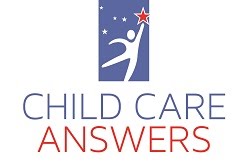DON’T MISS OUT ON THIS EXCITING TRAINING OPPORTUNITY!
Peter L. Mangione, Ph.D., is Co-Director of WestEd’s Center for Child and Family Studies. For over twenty-five years, he has provided leadership in the development of the Program for Infant/Toddler Care, a national model for training early childhood practitioners.
Join Dr. Mangione and other child care providers from throughout Indiana to explore why responsiveness to infants and toddlers is critically important to their development.
When: Friday, February 18th For child care CENTER and MINISTRY administrators and directors
Saturday, February 19th For family child care HOME providers
Time: Friday, February 18th 9:00am-4:00pm
Saturday, February 19th 9:00am-2:00pm
Location: Friday, February 18th
The Garrison Conference Center Blue Heron Ballroom
6002 N. Post Road, Indianapolis IN
Saturday, February 19th
Fort Harrison State Park Inn Roosevelt Ballroom
5830 N. Post Road, Indianapolis IN
Cost: $20 per person-includes resources and lunch!
PLEASE COMPLETE THE ATTACHED FORM AND RETURN IT WITH PAYMENT NO LATER THAN MONDAY, FEBRUARY 14TH.
Limited Space is Available.
Reservations will be accepted on a first come, first served basis.
For questions, please contact Renee’ Kinder at rkinder@iaccrr.org or call 317-924-5202 or 1-800-299-1627 ext. 224.
Peter L. Mangione, Ph.D., is Co-Director of WestEd’s Center for Child and Family Studies. For over twenty-five years, he has provided leadership in the development of the Program for Infant/Toddler Care, a national model for training early childhood practitioners.
Join Dr. Mangione and other child care providers from throughout Indiana to explore why responsiveness to infants and toddlers is critically important to their development.
When: Friday, February 18th For child care CENTER and MINISTRY administrators and directors
Saturday, February 19th For family child care HOME providers
Time: Friday, February 18th 9:00am-4:00pm
Saturday, February 19th 9:00am-2:00pm
Location: Friday, February 18th
The Garrison Conference Center Blue Heron Ballroom
6002 N. Post Road, Indianapolis IN
Saturday, February 19th
Fort Harrison State Park Inn Roosevelt Ballroom
5830 N. Post Road, Indianapolis IN
Cost: $20 per person-includes resources and lunch!
PLEASE COMPLETE THE ATTACHED FORM AND RETURN IT WITH PAYMENT NO LATER THAN MONDAY, FEBRUARY 14TH.
Limited Space is Available.
Reservations will be accepted on a first come, first served basis.
For questions, please contact Renee’ Kinder at rkinder@iaccrr.org or call 317-924-5202 or 1-800-299-1627 ext. 224.








